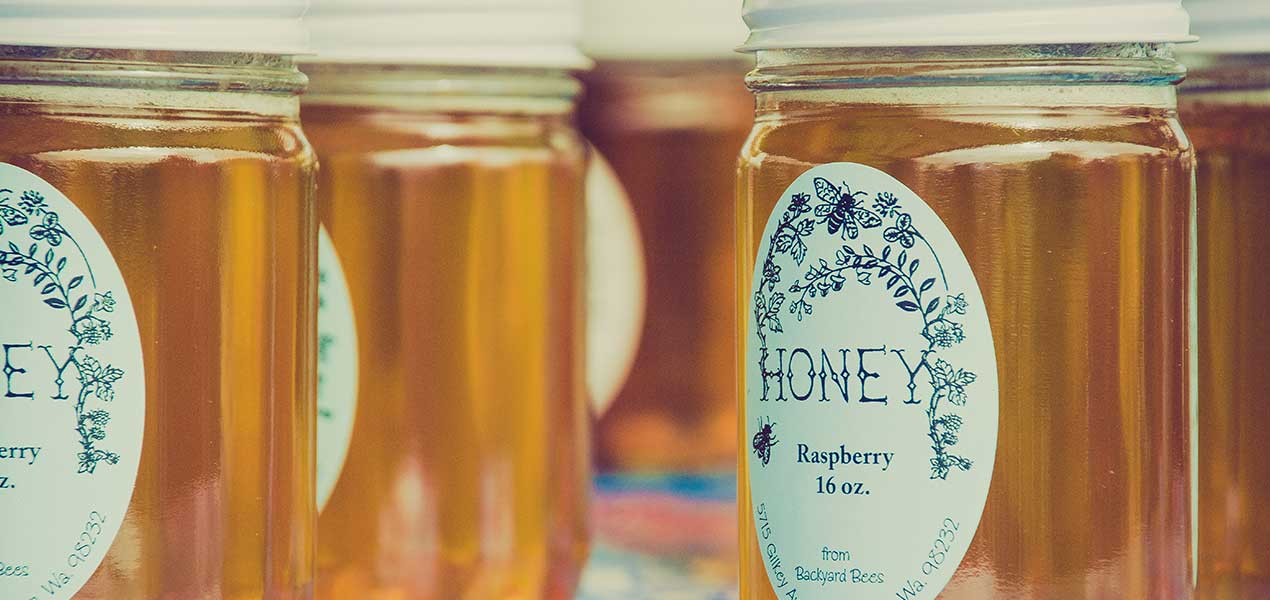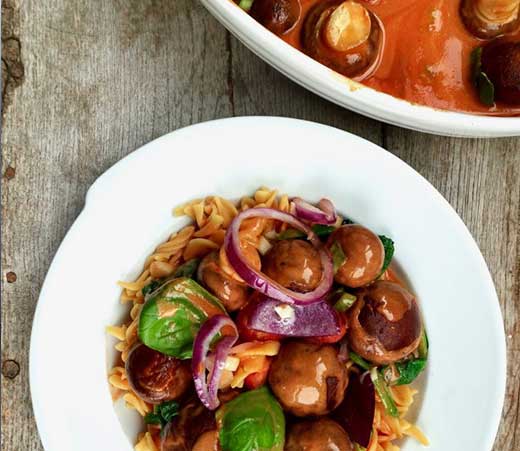
Product labels; what information do they actually contain?

It’s a new year, and perhaps you’re aiming to become healthier or more aware of what you’re eating? But where do you start? And how do you make good choices from all of the products on the shelves? Well, it all starts with understanding what you're putting in your shopping basket. And that information can be found on the packaging. But how can you check what's on the packaging? That’s what I’ll try to explain.
Firstly, don’t be misled by the front of the pack. The manufacturer uses the front of the pack to appeal to you, and tempt you into buying. They use pretty pictures of fruit or tag-lines such as ‘source of fibre’.
Has the product caught your attention? Then turn it around because that’s where you’ll find the important information!
Start with the statement of ingredients.
Here, you can see what is actually in the product. The list is a summary of all the ingredients in the item, in descending order of weight. In other words, the first ingredient is the most significant in the product and the last is the least. Check the length of the list too; the shorter the list, the less ‘processed’ the product will be.
Check the sugars in the product. You cannot eliminate sugars entirely, but be aware that there are around 50 different terms that can be used for sugar. You may think you’re being good but actually, you could be consuming ‘hidden sugars’. Anything that ends in syrup or ‘ose’, for example, is a form of sugar: glucose, fructose syrup, lactose, dextrose, maple syrup. However, apple juice, honey or fruit concentrate are also used as a source of sugar.
You can also find allergens in the list of ingredients (substances that could lead to allergic reactions). Manufacturers have to list the fourteen most frequently occurring allergens on their packaging. An allergen must be printed in a different font so that it is easily spotted by the consumer.
Additives, such as colourants, preservatives, citric acid, sweeteners, acidity regulators, and so on are also given in the ingredients; these are also known as E-numbers. These are safe, approved substances that help with the shelf-life, colour or flavour of a product. E-numbers are one of the most well-researched substances in our foods and are subject to very strict requirements. There are also checks on the quantities of E-numbers that the manufacturer may use in a product. However, the fact that E-numbers are often regarded as harmful means that manufacturers are beginning to gradually naming them. They use citric acid, for example, instead of E330. So don’t be misled. An E-number, by contrast, will always be preceded by a category name such as ‘emulsifiers’, ‘antioxidants’ or ‘gelling agents’ so you can always spot them. If you would rather eat unprocessed foods, you should look out for the (written out) E-numbers.
And also check the nutritional value table.
This shows how many calories and how much protein, fats, saturated fat, carbohydrates, sugars and salt a product contains per 100g or 100ml.
But, coming back to sugar... The quantity of sugars is always stated separately in the nutritional values table. This is the total quantity of sugar that a product contains, i.e. the 'added sugars’ but also the sugars that occur naturally in the product, such as sugars in fruit or milk.
Is the quantity of sugars 4g or more? Then there is at least one cube of sugar in the product, because one sugar cube is around 4g.
If you want to choose a healthier option, select two similar products and compare them per 100g or ml. Sometimes, the nutritional value per portion is also given, however the size of the portion is set by the manufacturer and does not always correspond to the portion that is usually eaten in practice.
Misleading or marketing?
Manufacturers definitely push the boundaries and unfortunately the European Commission has no plans for new legislation to tackle misleading packaging, so you’ll just have to use your own common sense!
Watch out for terms such as 'traditional’ or ‘home-made’ and ask yourself how ‘home-made’ a biscuit in a supermarket could really be? A baker may not have been involved in the process at all. A ‘strawberry yogurt’ with dozens of strawberries on the packaging? Check the list of ingredients and see how many strawberries are really used in the product. There's probably 1% of strawberry juice, with some aromatics for the flavour and beetroot juice for the colour. That has not got much to do with strawberries. A lovely term such as ‘wholegrain’ can often lead to confusion. Biscuits, crackers, wafers; they all come in a wholegrain variety. However, the list of ingredients and nutritional value table can shed a little light on the details; most products contain less than 50% wholegrain flour. Wholegrain bread is the exception to this as the term is legally defined and can only be applied to bread made entirely with wholegrain flour. The law does not apply to other products.
So, you can find a great deal of information on the packaging but you need to know how to interpret it correctly. You need to practise reading labels. Firstly, you need to decide what is important or relevant to you. Calorie-intake, sugar consumption, sustainability, etc. Don’t be worried that your visit to the supermarket is going to take hours now that you have to read all the labels. Just choose as natural as possible, then the labels will not be as long. Good luck!



Now that the last die-hard carnivores are slowly turning towards the vegetarian section at the supermarket, we can safely say that plant-based eating is no short-lived trend but a movement that can no longer be stopped.

11 tips by Lisa goes Vegan for eating vegetables more frequently